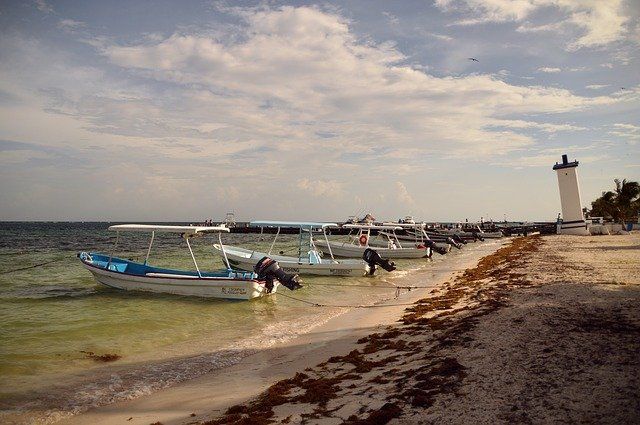More sustainable fishing practices are encouraged worldwide
In the national shrimp catch, 20 to 30 percent comes from the lagoon systems of Sonora, Sinaloa, and Nayarit. The FAO designated 2022 as the International Year of Artisanal Fisheries and Aquaculture.

In the world approximately 59.51 million people are working in the primary sector of fisheries and aquaculture, according to figures from the Food and Agriculture Organization of the United Nations (FAO); most of them are located in developing countries, and almost all of them live in conditions of poverty and high vulnerability.
The head of the Mazatlan Unit of the Institute of Marine Sciences and Limnology (ICML), Felipe Amezcua Martinez, commented that according to the international organization, more than 100 million people in the world depend directly on these two activities, which are developed mainly in developing countries in different parts of Asia, Latin America, and Africa.
To promote small-scale fishing practices worldwide and ensure a sustainable future for small-scale fishers and their communities, 2022 was designated by FAO as the International Year of Artisanal Fisheries and Aquaculture. This is a group of small-scale techniques where catch volumes are much smaller compared to industrial fishing or aquaculture. They are generally carried out in pangas or boats; in the case of aquaculture, it is done in some cages or fences that are placed in the lagoon systems.
According to the international body, they are distributed as follows: in Asia (85 percent of the world total), followed by Africa (nine percent), America (four percent), and Europe and Oceania (with one percent each). The initiative seeks to generate global advocacy that empowers artisanal fisheries and aquaculture and ensures a sustainable future for these important sectors, among other objectives.
"This type of fishing is also called coastal or small-scale, as I prefer to call it because some of the methods used are not so artisanal, but rather quite sophisticated. Coastal refers to the place where it is caught, at the shores of the sea or estuarine systems", said the university specialist.
Despite the role and responsibilities shown by these data, artisanal fisheries and aquaculture, that is, those carried out on a small scale, still lack access to and control over resources, assets, credits, information, training, and technology, as well as in decision-making, acknowledges the world organization.

In terms of gender, it is estimated that globally the proportion of women in the total aquaculture workforce is 19 percent, while 12 percent in the case of fisheries. However, the availability of technologies, capital, and financing is still limited for women compared to men.
In just one lagoon system in Sinaloa, one of the Mexican states with high fishing activity, there are approximately 2,000 boats with their associated fishermen.
"It is estimated that 20 to 30 percent of the national shrimp catch comes from the lagoon systems of Sonora, Sinaloa, and Nayarit. In economic and volume terms it is not so much, but the impact it has at a social level is huge because the number of fishermen and their families that depend on this type of fishing is much greater than that of industrial fishing", commented the specialist.
Industrial fishing in terms of volume and economic returns is greater. In Mexico, the main organisms that are caught and have the highest commercial value are tuna, sardine, shrimp, and shark, and most of the work is done by industrial fishing. Small-scale or artisanal fishing has a very large impact on the country due to the number of people associated with this activity.
At ICML's Mazatlan Unit, the diagnosis conducted in the last 20 years is to try to understand what species are caught with different methods, specifically in the southern part of the Gulf of California and the Pacific Northwest of Mexico, as well as to understand the relationships between fish species. Knowing their food web, abundance, breeding seasons, age and growth estimates, migrations, and movement patterns.
"We are working with the National Institute of Fisheries and Aquaculture to provide this type of information to help a more sustainable fishing, to get the data to fishermen so that they are well informed," he said.




